Quick Links
Freezing food in mason jars is an easy solution for anyone trying to reduce their waste. Not only do mason jars save space in your freezer, but they also provide an easy grab-and-go option for busy mornings or meal prep. Plus, using mason jars for freezing eliminates the need for wasteful plastic wrap or aluminum foil.
Mason jars are not only practical but also versatile in the kitchen. They come in various sizes and are suitable for a wide range of uses. They’re also a perfect addition to any zero-waste kitchen because they are reusable and durable.
We’ve got a 31 days to zero-waste challenge that showcases 21 different ways to use mason jars in your home. If you’re looking for more inspiration to turn your kitchen into a zero-waste paradise, check out our 15 actionable zero-waste kitchen tips.
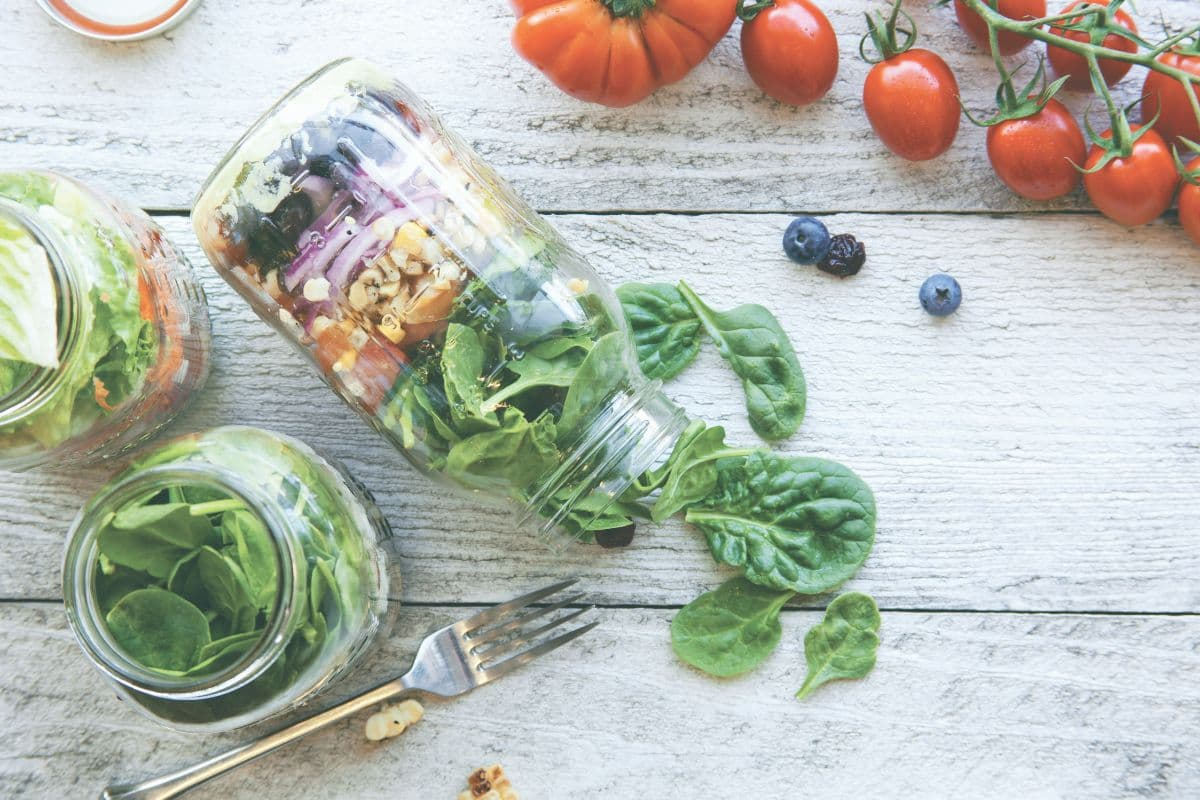
Can you freeze mason jars?
Are you ready for the answer to the question of whether or not you can freeze food or liquids in mason jars? Drumroll, please… Yes, you can! It’s a simple and practical solution that’s been around for a long time but often gets overlooked in our fast-paced lives. If you ask your grandma, she’ll probably have plenty of tips and tricks for storing food in mason jars to prevent freezer burn.
Buying Mason jars
When buying mason jars, there are a few different brands to choose from. Ball, Kerr, and Golden Harvest jars are some of the well-known brands.
There are several types of mason jars available for purchase, including:
- Regular Mouth Jars: These jars have a standard-size opening and are commonly used for canning fruits and vegetables, as well as for storage and crafting. They can come in straight-sided mason jars or with shoulders.
- Wide Mouth Mason Jars: Also known as wide mouth quarts, have a larger opening and are often used for canning larger fruits and vegetables and making jams and jellies.
- Jars for freezing: Some Jars are designed for freezing like the “freezer jars” and have a special lining in their lids to prevent freezer burn.
- Drinking Jars: Drinking jars are mason jars with a handle and a straw, these are commonly used for drinking lemonade, iced tea, and other cold drinks.
- Square Jars: These jars have a square shape and are often used for storage and crafting.
- Hexagonal Jars: These jars are hexagonal and often used for storage and crafting.
- Specialty Jars: There are many other types of specialty jars available, like the ones with a pour spout, screw-on lid, and glass handle, which are used for storage and gifting.
Just make sure that when you buy mason jars, you get the ones that are freezable and preferably wide-mouth mason jars since the narrow mouth doesn’t allow enough room for expansion.
With suitable jars and a little bit of know-how, you’ll be freezing food and liquids in mason jars like a pro in no time!
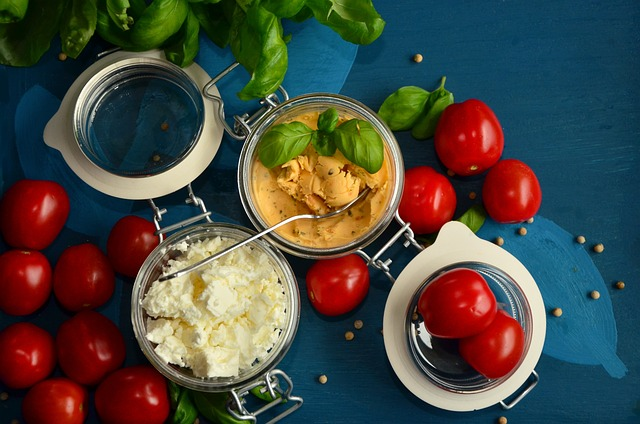
The different types of lids.
There are several types of lids available for mason jars, each with its own unique features and uses.
The most common type are metal lids, which create an airtight seal and are perfect for food storage and preserving food. They can start to rust over time, so it’s best to make sure they are well-dried after cleaning them.
Plastic lids are also an option, and the Ilid seems to be the most used one. It is said to be dishwasher safe, BPA-free and made from recycled plastic. You can use them for freezing liquids and food.
You can also purchase special lids with a rubber ring to enhance the seal. These types of lids are great for fermenting and pickling.
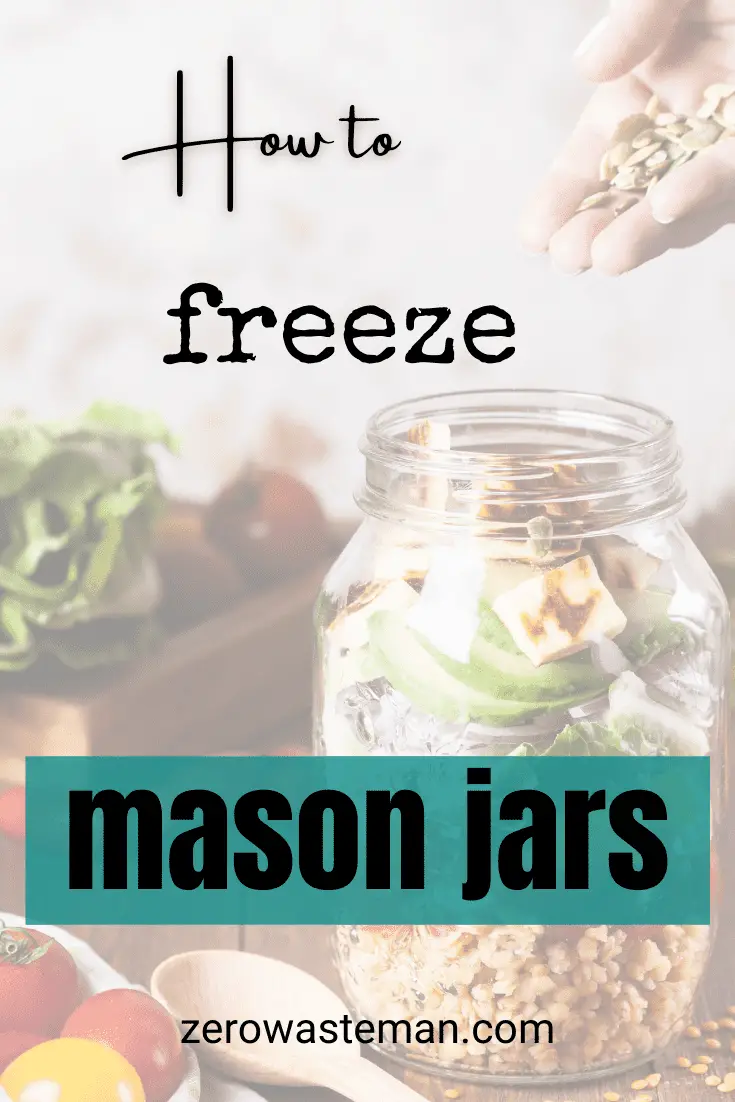
How to freeze food inside mason jars safely?
Freezing food in mason jars is a simple and safe process as long as a few guidelines are followed. Here is my step by step instructions to help you freeze liquid and food in mason jars
Before freezing, it’s essential to ensure that the mason jars are clean and completely dry. Any excess moisture in the glass jar can cause the glass to crack or break when exposed to the cold temperatures of the freezer.
It’s also important to ensure that the mason jars are labeled as freezer safe and have wide-mouth openings to allow for expansion during freezing.
How to clean my mason jars
Mason jars are not intended for use in the oven, as the sudden change in temperature can cause them to break or shatter. While it is possible to sterilize glass jars in the oven, it is important to ensure that the temperature does not exceed 200 degrees Fahrenheit.
A simpler and safer option is to clean the glass jars by hand using dish soap and drying them thoroughly.
1. Let your hot food cool down before you transfer it into your mason jar
To ensure safe freezing in mason jars, it is important to allow the food or liquid to cool before adding it to prevent cracked jars.
Pouring steaming hot liquid into a glass jar can cause the glass to crack or break.
Let the food or liquid cool down to room temp on the kitchen counter or outside until it is safe for freezing. This not only protects the jars but also preserves the quality of the food and prevents any potential contamination. By allowing the food or liquid to cool, you can ensure that your food stays safe and fresh for longer.
2. Get the right size mason jar for the job
There are several jars to choose from when it comes to freezing food in mason jars. The size of the glass jar you use will depend on the type of food you are freezing and the amount of space you have in your freezer.
For herbs and spices, a 4 oz mason jar is perfect. These items do not need to be frozen but can be stored in airtight glass jars to keep them fresh.
For dried fruit and nuts, a 16 oz mason jar is a good choice. This size allows for ample storage of these items and fits well in most freezers.
For grains and muesli, a 32 oz mason jar works well. This larger size is great for bulkier items and is best for those with larger freezers.
The 16 oz mason jar is a great option when looking for a quick meal. This size is perfect for storing single servings of food and can easily be thawed for a quick and convenient meal.
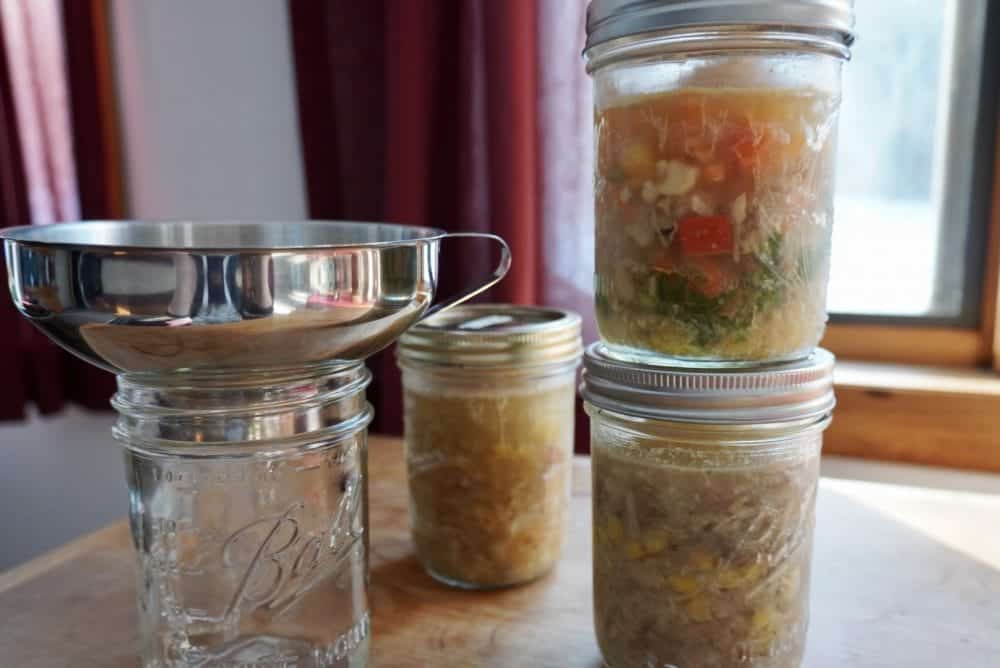
3. The easiest way to transfer your food into the mason jars
When transferring food into mason jars for freezing, there are a few easy methods to choose from. The easiest way to transfer your food will depend on the type of food you are freezing and the equipment you have on hand.
- One of the easiest methods is to use a wide-mouth funnel. Simply place the funnel into the opening of the mason jar and pour your food into the jar. This method is great for liquids and can help prevent spills and messes.
- Another easy method is to use a ladle or measuring cup to scoop food into the jars. This method is perfect for thicker foods like stews, chili, or soups.
- You could also use a piping bag to pipe in the food, this method is perfect when you want to be more precise with the amount you put in.
No matter which method you choose, leaving enough space in the jar to allow for expansion during freezing is essential. These easy methods allow you to quickly and easily transfer your food into mason jars for safe freezing.
This part gets a bit tricky if you don’t have the right tools at hand. I suggest a metal spoon and a wide-mouth metal funnel to transfer your contents into the jar. This is our favorite wide-mouth funnel.
If food is left at the outer edges of a mason jar when freezing, it can lead to a freezer burn. This occurs when food is exposed to air, causing the surface of the food to dry out and become discolored. This can lead to a loss of flavor and texture; in some cases, the food may become inedible.
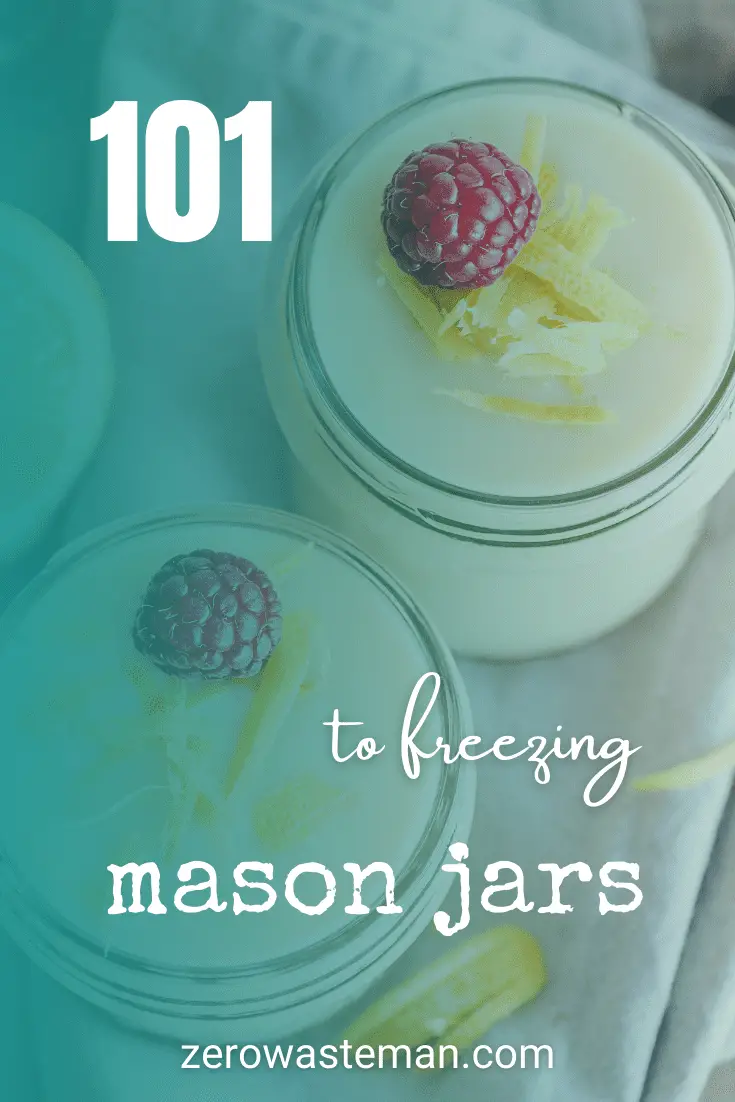
4. Leave enough room when freezing mason jars
When freezing food in a glass jar, it is important to leave enough space at the top to allow for expansion. This is because the food expands when frozen and could crack or break the mason jar if there is insufficient room. The amount of headspace you need will vary depending on the type of food and the jar size.
Some brands actually have a fill line on the side for reference.
A general rule of thumb is to leave at least one inch of headspace for pint-sized jars (16 oz) and 1 1/2 inches for quart-sized jars (32 oz). For freezer-safe canning jars with a wide mouth, it is recommended to leave 1/2 inch of headspace for solid foods and 1 inch for liquids.
It’s also important to note that you should use only freezer-safe jars and check the manufacturer’s recommendation for any specific ones you have on hand.
When water freezes, it expands, and that’s usually what most people are afraid of. The food containing water brings the mason jar in your freezer to bursting. The best way to avoid this is by letting your food cool down and allowing the content to expand.
5. Cool it even more to avoid broken jars
To prevent broken jars and accumulation of ice crystals on the food, it’s recommended to let the jar cool down before freezing. The best way to do this is by closing the lid and allowing the jar to cool down overnight.
If you’re in a rush, you can also run the jar under cool water or place it in the refrigerator. However, it’s essential to avoid putting hot liquids directly into the jar and then placing it in the freezer, as this increases the risk of the jar cracking. By following these simple steps, you can ensure that your mason jars will remain intact and your food will be safe to eat.
6. Label your glass mason jars
Congratulations, you’ve successfully managed to freeze mason jars! To ensure that you can easily identify your food in the future, it’s beneficial to label your jars.
Get creative with it! Use colorful permanent markers and fun masking tape to label your jars. Make it a fun project for the whole family to get involved in.
Not only will it make it easier to identify your frozen goods, but it’ll also add a playful touch to your freezer. Plus, you’ll be the envy of all your friends with the cutest and most organized freezer in town!
Frozen liquids can often look similar, so labeling your jars with the contents and dates will prevent confusion and ensure you use the correct ingredient for your recipe.
7. Freeze the mason jars
Great job! You have successfully taken all the necessary steps to avoid thermal shock, and your food can now be safely frozen. You can put your glass mason jars into the freezer for up to 5 months, ensuring that your food stays fresh and delicious. Enjoy your meal!
Pro Tip: You can individually wrap them with a cloth or a tea towel so they won’t break in the freezer when opening your chest freezer.
8. How to thaw jars
To safely thaw frozen food, you can use a few methods.
- Move the food to the refrigerator and let it thaw slowly over several hours or overnight. This is the safest method as it allows the food to thaw evenly and prevents the growth of bacteria.
- Another method is to place the frozen jar in a bowl of cold water and change it frequently to keep it cold. This method is faster than thawing in the refrigerator but still maintains a safe temperature for the food.
- Lastly, you can also thaw frozen food in the microwave using the “defrost” setting, but this method can cause uneven thawing. It should be monitored closely to prevent the growth of bacteria. It is important to note that it should not be refrozen once the food is thawed.
Just make sure you don’t expose your frozen jars to sudden temperature changes to avoid broken glass.
The main reason why your mason jars crack in the freezer.
- The first and most common reason is that you didn’t leave enough room for the water to expand. The general rule is to leave between one and two inches of space before you freeze glass jars.
- The second reason is rapid temperature changes. While mason jars can withstand both extremes, cold to boiling, they can not handle a quick change. Always let the content cool down to room temperature before putting it in the freezer.
Quick Tip: Avoid rusty lids
The lids will start to rust over time, and the easiest way to avoid that is by just having a couple of spare ones in a separate storing basket. Alternatively, you could opt for reusable plastic lids. If you are ok with using them, you can, as you will reuse them over and over.
FAQ:
Can you freeze mason jars with smoothies?
Yes. However, leaving enough headspace at the top of the jar is important to allow for expansion as the smoothie freezes. You should aim to leave at least 1/2 inch of headspace in the jar. Additionally, it’s a good idea to label the jar with the date and contents, so you know when it was frozen and what it is.
Also, mason jars are usually made of glass, which can be fragile when exposed to very low temperatures. It’s important to be gentle when handling them in the freezer to avoid cracking or breaking the jars.
Can you freeze mason jars with soup?
The same goes here. You can freeze vegetable soup in a glass mason jar after you have cooled it down. Make sure to leave 1-2 inches of space before you put the pot in the freezer. No need to get out your ruler; leave enough room for the air to expand.
Can you freeze mason jars with bone broth?
I am pretty sure you have guessed my answer by now, right? Yes, you can follow the simple steps mentioned above.
Can you freeze glass mason jars with the metal lid on?
Freezing glass mason jars with a metal lid is not recommended. The metal lid is not designed to withstand the extreme temperature change of going from a warm room temperature to a freezing temperature.
The expansion and contraction of the metal lid can cause it to warp or even crack the jar. It is best to use a plastic lid or a freezer-safe lid specifically designed for freezing mason jars.
Does freezing glass weaken it?
Freezing glass jars can cause it to weaken over time, as the expansion and contraction of the glass due to temperature changes can cause stress on the material. However, this process is gradual and may not affect the structural integrity of the glass immediately.
It is important to note that some types of glass, such as tempered glass, are specifically designed to withstand extreme temperatures and may not be affected by freezing. Additionally, glass containers that are specifically designed for freezing, such as mason jars, may be more resistant to weakening.
What temp does glass crack?
Generally speaking, mason jar glass is designed to withstand extreme temperature changes, such as those that occur when freezing or boiling. The glass will usually crack when exposed to sudden and drastic changes in temperature, such as being heated and then immediately cooled or vice versa.
Conclusion:
You are on your way to becoming a zerowasteman/woman. By using mason jars to store your frozen soup, baby food, or spaghetti sauce, you don’t have to go to the grocery store as much since you have more prepared meals accessible in your freezer. This is what zero waste is all about; preparation.
Alright, I hope this answers all your questions; if not, and you have some more, don’t hesitate to leave me a comment below, and I will answer it. And if you thought this was helpful, share it on social media and subscribe if you haven’t already. Happy freezing

I am a professional canner. I’ve made over 700,000 jars of jam using mason jars, exclusively using a 2 piece lid. I do not agree with the suggestion of allowing your product to cool down. It’s supposed to be sealed while intensely hot. That’s the whole point. That’s why you use heat tempered glass like mason jars.
Thank you for clarifying this for me. I wasn’t aware that professional canners existed, but I appreciate your suggestions and will update the information accordingly.
The pH is the deciding factor. Certain foods should be boiling water bathed or pressure cooked. Like vegetables, etc.